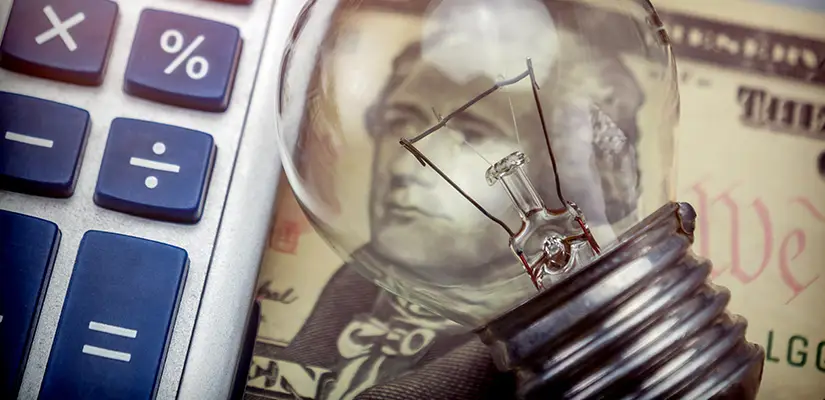
Mr. Electric explains how turning off lights saves money and energy.
|
Some people have a bad habit of leaving the lights on when they exit a room. Some even forget to shut off the lights before they leave the house. Is this a big deal?
How Much Does It Cost to Leave the Lights On?
Not all light bulbs are created equal. Incandescent bulbs, the oldest lighting technology still in use today, is the least efficient and most expensive to operate. The Department of Energy breaks down electricity use and costs by bulb, each of which is equal in brightness to a 60 watt (W) incandescent:
- 60W Incandescent: A 60W incandescent bulb consumes 0.06 kilowatt-hours (kWh) of electricity per hour. This means after 1,000 hours, it consumes 60 kWh of electricity. At $0.11 per kWh, this comes to $6.60.
- 43W Halogen: Slightly more efficient than incandescent lights, halogens use about 25 percent less energy to produce the same amount of light. After 1,000 hours in use, one bulb costs about $4.73 to operate.
- 15W CFL: At about 75 percent more efficient than incandescent bulbs, one compact fluorescent light only costs $1.65 to operate for 1,000 hours.
- 12W LED: The most efficient of all, light-emitting diodes are up to 80 percent more efficient than incandescent bulbs. One LED costs an insubstantial $1.32 to operate for 1,000 hours.
The Cost of Lighting Adds Up
Seeing the above numbers may at first convince you that leaving your lights on is no big deal. However, stop to think about how many lights are in your home and how long you keep them on each day and the costs add up quickly.
According to Energy Star, the average home has 40 light bulbs. The cost to light your home accounts for about 20 percent of your electric bill, costing the average homeowner $200 per year. Consider how much money you spend based on the types of bulbs you use and how much you can save by turning them off when you leave.
- Incandescent: Odds are you never have every single light on in your house at once. Assuming you leave 10 incandescent bulbs on for one hour per day when they're not needed, this adds an extra $24 to your lighting bills every year.
- Halogen: If you leave 10 halogen lights on for one hour per day when they're not needed, this adds an extra $17 to your lighting bills every year.
- CFL: If you leave 10 CFLs on for one hour per day when they're not needed, this adds an extra $6 to your lighting bills every year.
- LED: If you leave 10 LEDs on for one hour per day when they're not needed, this adds an extra $5 to your lighting bills every year.
When to Turn Off Lights to Maximize Savings
Do you waste more electricity by turning your lights off and on repeatedly? Sure, a few dollars here and there may not seem like much, but to maximize your savings, know when to turn off your lights according to the DOE:
- Incandescent and halogen: Since these are the least efficient bulbs, you should turn them off whenever they're not needed to maximize savings.
- CFL: The cost-effectiveness of turning off CFLs is a bit more complicated. A general rule of thumb is to turn them off if you'll be gone for 15 minutes or less. Contrary to popular belief, this recommendation isn't because CFLs consume a lot of energy when they start up. In fact, the "inrush" of current is only equal to about five seconds of steady operation. However, the cost savings come by helping the bulb last longer. After all, CFLs wear out faster if they're switched on and off frequently.
- LED: The operating life of LEDs isn't affected by being turned on and off. This means you should make it a habit to always turn off LEDs when you leave a room.
Contact Mr. Electric
Interested in maximizing energy savings in other ways? Contact Mr. Electric® for more ideas.
